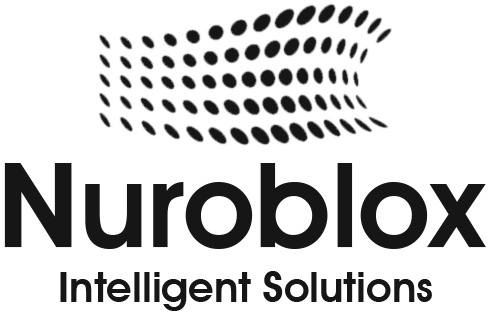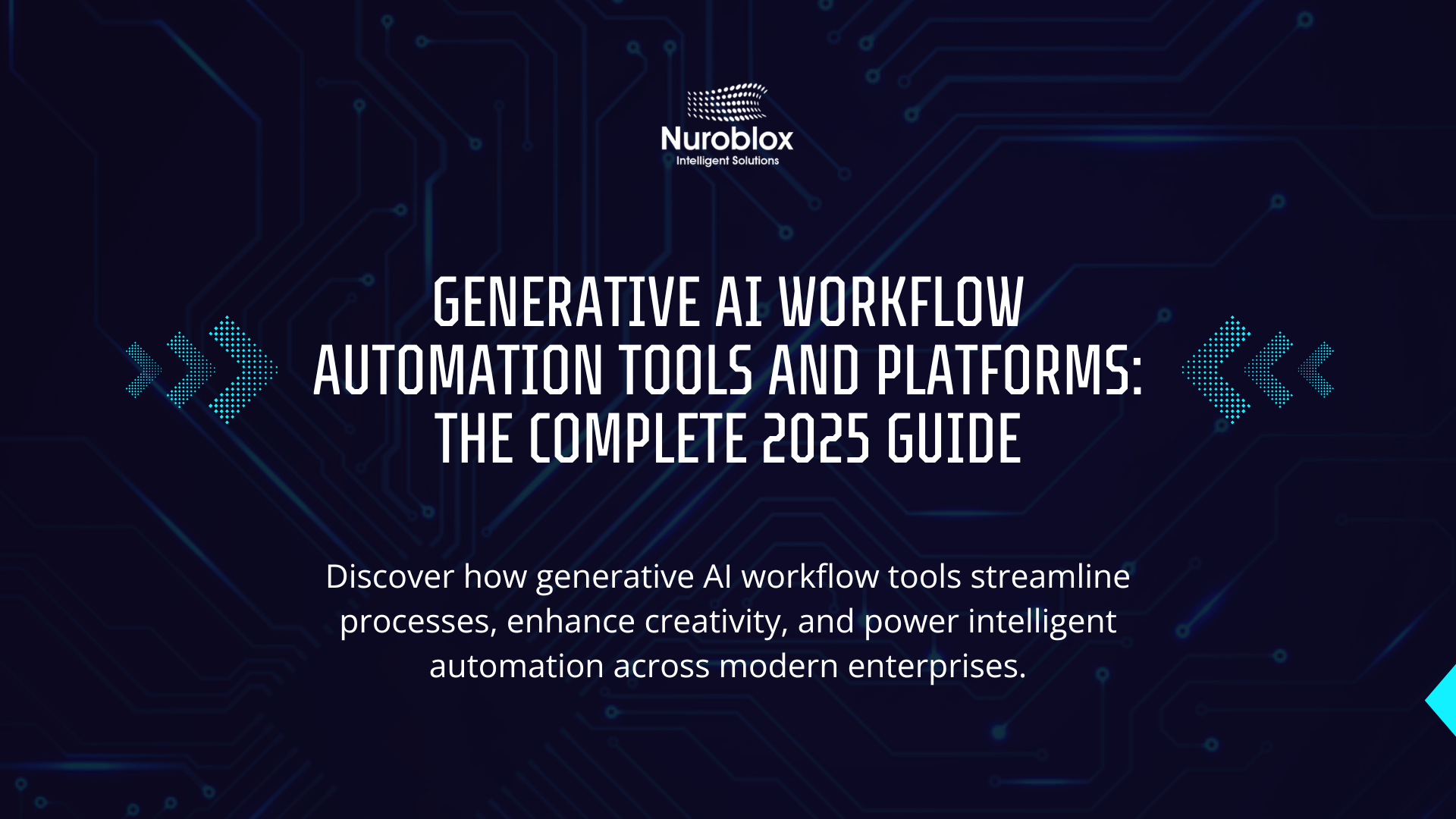Generative AI Workflow Automation Tools and Platforms: The Complete 2025 Guide
Organizations worldwide are discovering that generative AI workflow automation represents the next frontier in business efficiency. Unlike traditional automation that follows rigid rules, generative AI platforms can understand context, make intelligent decisions, and create content autonomously. This comprehensive guide explores the leading tools, platforms, and strategies that are transforming how enterprises manage their workflows in 2025.
What is Generative AI Workflow Automation?
Generative AI workflow automation combines the creative and analytical capabilities of generative artificial intelligence with systematic workflow management. These AI workflow automation tools don’t just execute predefined tasks-they can generate new content, analyze complex data patterns, make contextual decisions, and adapt to changing business conditions without constant human intervention.
The technology leverages large language models (LLMs), machine learning algorithms, and neural networks to understand natural language instructions, process unstructured data, and create outputs ranging from documents and code to strategic recommendations. When integrated into workflow systems, generative AI transforms static process maps into dynamic, intelligent automation ecosystems.
Modern generative AI platforms offer capabilities that include document generation, intelligent routing, predictive analytics, conversational interfaces, and autonomous decision-making. This evolution represents a fundamental shift from traditional robotic process automation (RPA) to truly intelligent systems that can handle exceptions, learn from patterns, and continuously improve performance.
Why Businesses Need AI Workflow Automation Tools
The business case for AI-powered workflow tools has never been stronger. Organizations implementing these solutions report productivity gains of 30-50% in automated processes, with some achieving even higher efficiency improvements in knowledge-intensive workflows.
Key benefits include –
- Reduced operational costs through elimination of repetitive manual tasks and improved resource allocation
- Enhanced accuracy with AI systems that minimize human errors and maintain consistent quality standards
- Scalability without proportional headcount increases enabling growth without linear cost expansion
- Faster processing times as AI handles tasks in seconds that previously took hours or days
- Improved employee satisfaction by removing mundane work and enabling focus on strategic initiatives
According to recent industry analysis, companies using enterprise AI automation solutions experience 40% faster time-to-market for new products and services. The technology enables teams to redirect human creativity toward innovation while AI handles routine workflow execution, data processing, and initial analysis tasks.
Furthermore, generative AI excels at handling the increasing complexity of modern business operations. As workflows become more intricate with multiple touchpoints, exceptions, and decision branches, traditional automation struggles. Generative AI thrives in these environments, understanding nuance and context that rule-based systems miss entirely.
Top Generative AI Workflow Automation Platforms
The market for workflow automation software has expanded rapidly, with numerous platforms offering varying capabilities. Understanding the landscape helps organizations select the right solution for their specific needs.
Enterprise-Grade Platforms
Nuroblox stands out as a comprehensive intelligent workflow automation platform designed specifically for enterprise requirements. The platform combines no-code and low-code capabilities with advanced generative AI, enabling both technical and business users to create sophisticated automated workflows. Nuroblox offers robust security features, enterprise-grade scalability, and seamless integration with existing systems, making it ideal for organizations requiring reliable, secure AI automation at scale.
Leading cloud providers have also entered the space with robust offerings. Microsoft Power Automate with AI Builder integrates deeply with the Microsoft ecosystem, while Google Cloud’s Vertex AI Workflows provides powerful machine learning integration. These platforms excel in organizations already heavily invested in their respective cloud ecosystems.
Specialized AI Automation Solutions
Several platforms focus on specific aspects of AI workflow management. UiPath has evolved from pure RPA to incorporate generative AI capabilities, offering strong document processing and attended automation features. Automation Anywhere’s platform emphasizes intelligent document processing with AI-powered data extraction and validation.
Emerging platforms like Zapier Central and Make (formerly Integromat) have added generative AI features to their integration-focused approaches, making them accessible for smaller organizations and specific use cases. These tools democratize automation by offering intuitive interfaces and pre-built connectors to thousands of applications.
Industry-Specific Solutions
Certain industries benefit from specialized automated workflow solutions tailored to their unique requirements. Healthcare organizations leverage platforms with HIPAA compliance and medical data processing capabilities. Financial services institutions require platforms with enhanced security, audit trails, and regulatory reporting features built into the workflow automation framework.
Essential Features of Modern AI Workflow Platforms
When evaluating generative AI workflow automation platforms, organizations should prioritize several critical capabilities that distinguish truly intelligent systems from basic automation tools.
Generative AI Capabilities
The core differentiator is the platform’s ability to leverage generative AI for content creation, analysis, and decision-making. Look for platforms that offer natural language processing, content generation, intelligent summarization, and contextual understanding. The AI should handle unstructured data effectively, extracting insights from emails, documents, images, and conversations without rigid templates.
Advanced platforms provide AI orchestration that coordinates multiple AI models and traditional automation components into cohesive workflows. This orchestration enables complex processes where generative AI handles creative and analytical tasks while other automation handles structured data processing and system integration.
Integration and Connectivity
Successful enterprise AI automation requires seamless integration with existing technology stacks. Platforms should offer pre-built connectors to popular business applications, APIs for custom integrations, and the ability to work with both cloud and on-premises systems. The best platforms support hybrid architectures, enabling gradual migration strategies rather than requiring complete infrastructure overhaul.
Database connectivity, real-time data synchronization, and event-driven triggers ensure workflows respond immediately to business conditions. Integration with communication platforms, collaboration tools, and business intelligence systems creates a unified automation ecosystem.
Security and Governance
Enterprise organizations cannot compromise on security when implementing AI workflow automation tools. Look for platforms offering role-based access control, data encryption at rest and in transit, audit logging, and compliance certifications relevant to your industry. Generative AI introduces additional considerations around data privacy, model governance, and responsible AI usage.
The platform should provide transparency into AI decision-making, version control for workflow configurations, and the ability to implement approval gates for sensitive processes. Compliance features should support regulatory requirements like GDPR, SOC 2, and industry-specific standards.
Implementation Best Practices for Generative AI Workflow Automation
Successfully deploying intelligent workflow automation requires strategic planning and thoughtful execution. Organizations that follow proven methodologies achieve faster time-to-value and higher adoption rates.
Start with High-Impact, Low-Complexity Workflows
Begin your automation journey by identifying processes that combine significant business impact with relatively straightforward implementation. Customer onboarding, invoice processing, employee help desk requests, and report generation represent excellent starting points. These workflows demonstrate value quickly while building organizational confidence in the technology.
Document current workflows thoroughly before automation, identifying pain points, bottlenecks, and manual touchpoints. This analysis reveals opportunities where AI-powered workflow tools can deliver immediate improvements while highlighting processes that may require redesign before automation.
Build Cross-Functional Implementation Teams
Successful workflow automation software implementations require collaboration between IT, business operations, and end users. Form teams that include process owners who understand business requirements, technical specialists who can configure integrations, and change management experts who ensure adoption.
Involve end users early in the design process to ensure automated workflows meet practical needs and align with daily work patterns. Their insights prevent common pitfalls and increase acceptance when the new system launches.
Implement Governance and Monitoring
Establish clear governance frameworks before deploying generative AI workflow automation at scale. Define who can create workflows, approval processes for production deployment, data handling standards, and performance metrics. Regular monitoring ensures workflows continue performing as expected and identifies optimization opportunities.
Implement exception handling processes for scenarios where automation encounters unexpected situations. The best AI workflow management approaches include escalation paths to human decision-makers when AI confidence falls below defined thresholds.
Real-World Use Cases and Applications
Understanding how organizations apply enterprise AI automation provides valuable insights for planning your implementation strategy.
Customer Service and Support
Companies deploy generative AI workflows to handle customer inquiries, routing complex issues to appropriate specialists while resolving routine questions automatically. The AI analyzes customer sentiment, accesses knowledge bases, generates personalized responses, and escalates when necessary. This approach reduces response times by 70% while improving customer satisfaction scores.
Leading organizations use intelligent workflow automation to process support tickets across multiple channels, maintaining context as conversations move between chat, email, and phone. The AI suggests solutions to support agents, drafts responses for approval, and learns from resolution patterns to improve over time.
Document Processing and Content Creation
AI workflow automation tools excel at processing invoices, contracts, compliance documents, and business correspondence. Generative AI extracts relevant information, validates against business rules, routes for approvals, and updates systems automatically. Organizations report 90% reduction in manual data entry and 50% faster document processing cycles.
Content creation workflows leverage generative AI to produce first drafts of marketing materials, reports, product descriptions, and communications. Human reviewers refine the AI-generated content, focusing creative energy on strategy and refinement rather than starting from blank pages.
IT Operations and DevOps
Technology teams implement automated workflow solutions for infrastructure provisioning, code deployment, incident response, and system monitoring. Generative AI analyzes log files, identifies anomalies, generates troubleshooting documentation, and even writes code snippets to resolve common issues.
DevOps workflows incorporate AI to review code for security vulnerabilities, suggest optimizations, generate test cases, and maintain documentation automatically. This automation enables smaller teams to maintain larger, more complex systems without proportional increases in manual effort.
Human Resources and Employee Onboarding
HR departments use AI-powered workflow tools to streamline recruiting, onboarding, benefits administration, and employee requests. Generative AI conducts initial candidate screening, schedules interviews, generates offer letters, and creates personalized onboarding plans based on role requirements and employee background.
Employee service workflows handle time-off requests, expense approvals, policy questions, and IT provisioning through conversational interfaces. The AI understands natural language requests, applies business rules, and processes approvals automatically when appropriate.
Financial Operations
Finance teams leverage generative AI workflow automation for accounts payable/receivable, expense processing, financial reporting, and compliance tasks. The technology reconciles transactions, identifies discrepancies, generates variance analysis, and produces financial narratives explaining performance trends.
Budget planning workflows incorporate generative AI to analyze historical spending patterns, forecast future requirements, and generate budget proposals with supporting justifications. This automation reduces budget cycle time from weeks to days while improving accuracy.

Selecting among generative AI platforms requires careful evaluation of your organization’s specific requirements, technical capabilities, and strategic objectives.
Scalability and Performance
Ensure the platform can handle your current workflow volumes while providing headroom for growth. Evaluate performance under load, particularly for workflows with tight SLA requirements. Cloud-native workflow automation software typically offers better scalability than on-premises solutions, but may introduce latency for certain use cases.
Consider the platform’s pricing model and how costs scale with usage. Per-transaction pricing works well for variable workflows, while user-based licensing suits organizations with consistent automation volumes.
Ease of Use and Development Speed
The best AI workflow automation tools balance power with accessibility. No-code visual designers enable business users to create and modify workflows without programming skills, accelerating development and reducing IT backlogs. Low-code options provide flexibility for complex scenarios requiring custom logic or integration.
Evaluate the learning curve for your team, availability of training resources, and quality of documentation. Platforms with active user communities and extensive template libraries reduce time-to-value significantly.
Vendor Stability and Support
Assess the vendor’s financial stability, product roadmap, and commitment to generative AI innovation. The enterprise AI automation landscape evolves rapidly, making vendor adaptability crucial. Review customer support options, service level agreements, and the vendor’s track record for addressing issues and releasing updates.
Consider the platform’s ecosystem of implementation partners, consultants, and system integrators who can provide additional expertise if needed. Strong partner networks indicate market maturity and reduce implementation risk.
Future Trends in AI Workflow Automation
The intelligent workflow automation landscape continues evolving rapidly, with several emerging trends shaping the future of enterprise automation.
Autonomous Agents and Multi-Agent Systems
The next generation of AI workflow management platforms will deploy autonomous agents that operate independently within defined parameters, making decisions and taking actions without human intervention. Multi-agent systems will coordinate specialized agents, each handling specific workflow aspects while collaborating toward common objectives.
These autonomous agents will learn from outcomes, adapt strategies based on changing conditions, and communicate with humans using natural language. Organizations will shift from programming workflows to training agents and defining objectives.
Hyper-Personalization and Contextual Awareness
Future generative AI workflow automation systems will deliver hyper-personalized experiences, adapting workflows based on individual user preferences, behavior patterns, and contextual factors. The AI will understand when users prefer detailed information versus summaries, optimal communication channels, and ideal timing for different types of interactions.
Contextual awareness will enable workflows to adjust automatically based on business conditions, market changes, and organizational priorities without manual reconfiguration.
Enhanced Human-AI Collaboration
Rather than replacing human workers, advanced AI-powered workflow tools will enhance human capabilities through seamless collaboration. AI will handle data gathering, initial analysis, and option generation, while humans focus on judgment, creativity, and relationship management.
Conversational interfaces will enable natural dialogue between workers and automation systems, with AI explaining its reasoning, accepting feedback, and learning from corrections to improve future performance.
Getting Started with Generative AI Workflow Automation
Organizations ready to embrace generative AI workflow automation should begin with a structured approach that builds capabilities progressively while delivering measurable business value.
Conduct a workflow audit to identify automation opportunities, prioritizing processes with high volume, clear rules, and significant manual effort. Engage stakeholders across the organization to understand pain points and secure executive sponsorship for automation initiatives.
Evaluate platforms like Nuroblox that offer enterprise-grade capabilities with accessible interfaces, enabling both quick wins and long-term scalability. Start with pilot projects in contained environments, measure results rigorously, and scale successful workflows across the organization.
Invest in training for team members who will design, maintain, and optimize automated workflows. Building internal expertise ensures sustainable automation programs that evolve with your business needs rather than depending entirely on external consultants.
Conclusion – Transform Your Business with Generative AI Workflow Automation
Generative AI workflow automation represents a transformative opportunity for organizations seeking competitive advantage through operational excellence. The technology has matured beyond experimental phases into proven solutions delivering measurable business value across industries and use cases.
By selecting the right platform, starting with high-impact processes, and building internal capabilities, organizations can achieve dramatic productivity improvements while enhancing employee satisfaction and customer experiences. Platforms like Nuroblox provide the enterprise-grade capabilities, security, and scalability required for sustainable automation programs that grow with your business.
The future belongs to organizations that embrace intelligent automation strategically, combining human creativity with AI capabilities to achieve what neither can accomplish alone. Begin your generative AI workflow automation journey today to transform how your organization operates and position yourself for continued success in an increasingly automated business landscape.
Ready to explore how generative AI workflow automation can transform your enterprise workflows? Discover how Nuroblox’s comprehensive platform enables organizations to build, deploy, and scale intelligent automation solutions with confidence.


